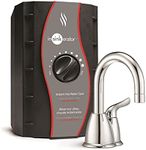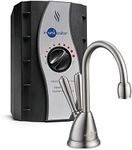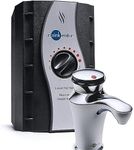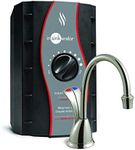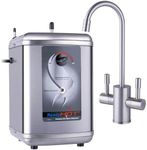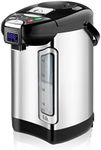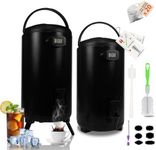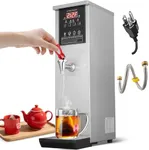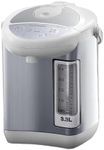Buying Guide for the Best Boiling Water Dispenser
Choosing the right boiling water dispenser can significantly enhance your kitchen experience, providing you with instant hot water for tea, coffee, cooking, and cleaning. To make an informed decision, it's important to understand the key specifications and how they align with your needs. Here are the main factors to consider when selecting a boiling water dispenser.CapacityCapacity refers to the amount of water the dispenser can hold and heat at one time. This is important because it determines how much hot water you can access without needing to refill the unit frequently. Dispensers typically range from 2 to 5 liters. If you have a large family or frequently entertain guests, a larger capacity might be more convenient. For smaller households or occasional use, a smaller capacity should suffice.
Heating SpeedHeating speed indicates how quickly the dispenser can bring water to a boil. This is crucial for those who need hot water on demand. Faster heating speeds are generally more convenient but may consume more energy. If you often find yourself in a rush, look for a dispenser with a rapid heating feature. For those who are more patient or use the dispenser less frequently, a standard heating speed will be adequate.
Temperature ControlTemperature control allows you to set the water to your desired temperature. This is important for different uses, such as brewing delicate teas that require lower temperatures or making instant noodles that need boiling water. Dispensers with adjustable temperature settings offer more versatility. If you have specific temperature needs, opt for a model with precise control. Otherwise, a basic model with a single boiling temperature might be sufficient.
Energy EfficiencyEnergy efficiency measures how much energy the dispenser uses to heat water. This is important for both environmental and cost-saving reasons. Look for models with energy-saving features like insulation to keep water hot longer or automatic shut-off when not in use. If you are conscious about your energy consumption, choose a dispenser with a high energy efficiency rating. For occasional use, energy efficiency might be less of a concern.
Safety FeaturesSafety features include mechanisms like automatic shut-off, child locks, and non-slip bases. These are important to prevent accidents, especially in households with children or elderly members. If safety is a top priority for you, look for dispensers with multiple safety features. For households with fewer safety concerns, basic safety features might be adequate.
Ease of UseEase of use encompasses how simple the dispenser is to operate, refill, and clean. This is important for everyday convenience. Features like one-touch operation, clear water level indicators, and removable drip trays can make a big difference. If you value convenience and user-friendliness, look for models with these features. For those who don't mind a bit more effort, simpler models can be just as effective.
Build Quality and DurabilityBuild quality and durability refer to the materials and construction of the dispenser. This is important for ensuring the product lasts a long time and withstands regular use. Stainless steel models are generally more durable and resistant to wear and tear. If you plan to use the dispenser frequently, invest in a high-quality, durable model. For occasional use, a less robust model might be sufficient.
